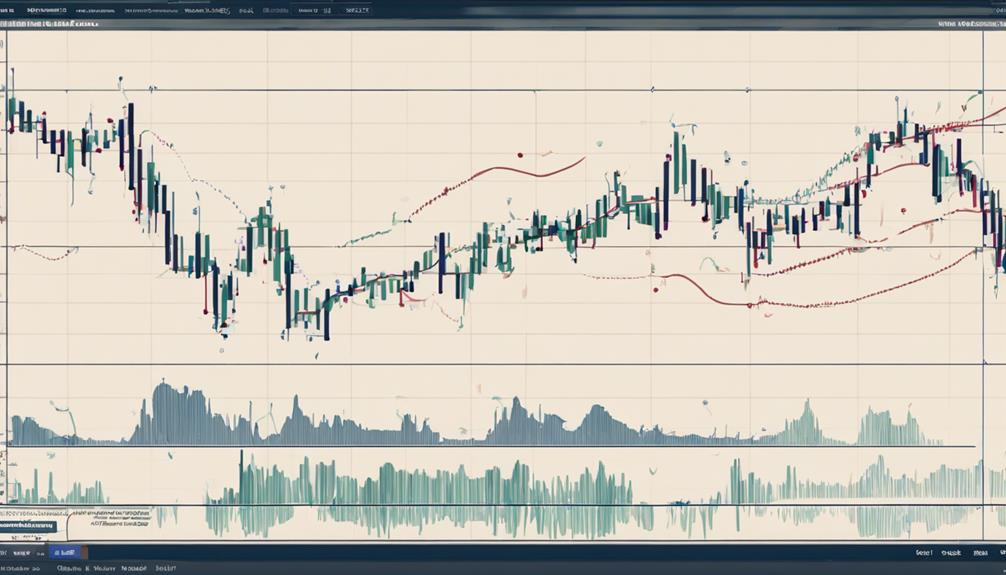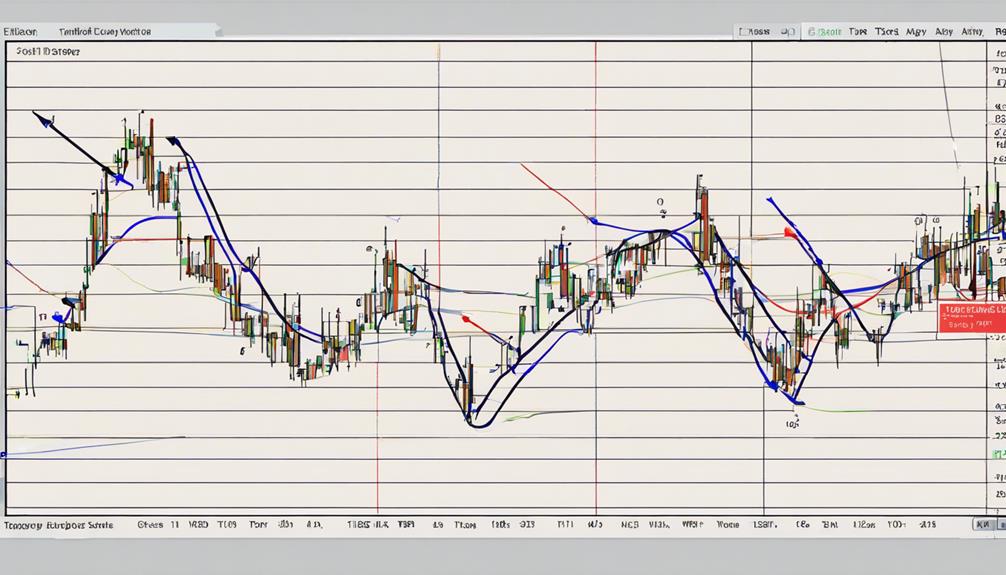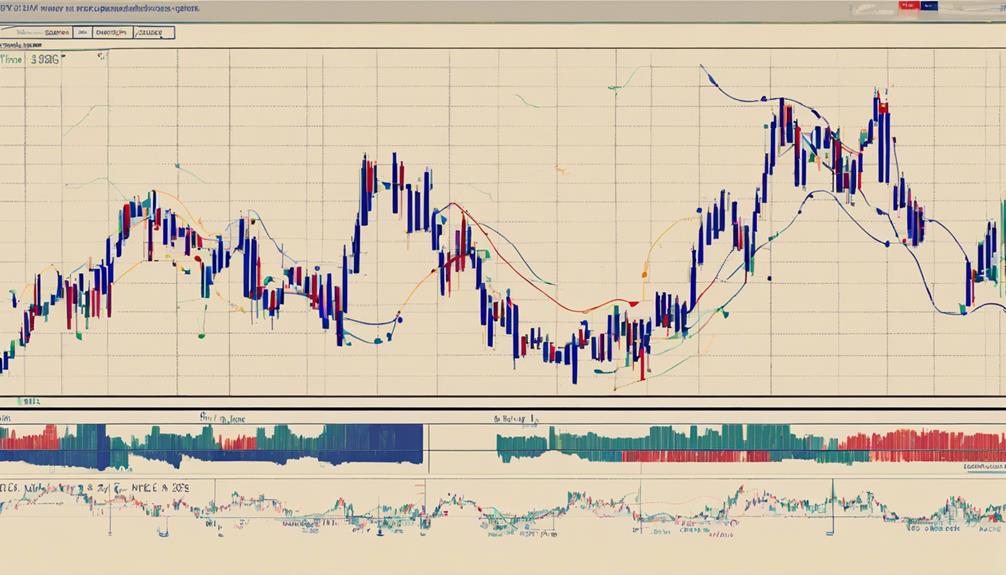Elliott Wave Theory has gained prominence among day traders for its potential in predicting market trends and guiding strategic trading decisions. By understanding wave patterns, distinguishing between impulse and corrective waves, and employing specific rules for trend identification, traders can enhance their market analysis.
However, the application of this theory comes with its set of challenges, including subjective interpretation and the importance of risk management. To navigate these complexities and harness the predictive power of Elliott Wave Theory effectively, traders often combine it with other technical indicators for a more comprehensive trading strategy.
Understanding Elliott Wave Theory Basics
In grasping the fundamentals of Elliott Wave Theory, a systematic approach to categorizing market movements into impulse and corrective waves is essential for traders aiming to forecast price trends effectively. Elliott Wave Theory distinguishes between impulse waves, which denote trending periods, and corrective waves, indicating consolidating phases in market price movements. Traders rely on analyzing chart patterns to predict wave cycles and identify potential trade opportunities within these wave patterns.
Corrective waves play a critical role in entering trades strategically to capture the subsequent impulse wave and enhance trading success. Moreover, recognizing instances where corrective waves resemble impulse waves can serve as a signal for potential trend changes and trading opportunities. Understanding wave patterns and structures, including the 5-wave impulse-correction-impulse cycle, is paramount for traders engaged in day trading, as it forms the basis for applying Elliott Wave Theory effectively in capturing profitable trade setups.
Identifying Impulse and Corrective Waves

Building upon the foundational understanding of Elliott Wave Theory, distinguishing between impulse and corrective waves is a pivotal skill for day traders seeking to navigate market trends effectively. Impulse waves propel in the direction of the main trend, signifying robust price movements that traders often aim to capitalize on.
On the other hand, corrective waves move against the primary trend, offering temporary price corrections that present entry points for traders to position themselves strategically for the next impulse wave. By analyzing these waves meticulously, day traders can identify potential profit opportunities by entering trades during impulse waves and utilizing corrective waves to fine-tune their entry points.
This analytical approach to interpreting price movements and trends is essential for successful day trading practices, enabling traders to make informed decisions based on the principles of Elliott Wave Theory. Mastering the art of differentiating between impulse and corrective waves equips traders with a valuable tool to optimize their trading strategies and enhance their overall performance in the market.
Leveraging Elliott Waves for Market Trends

Utilizing Elliott Waves for Market Trends involves employing a systematic approach to analyze price movements and anticipate potential market directions based on wave patterns and structures. Elliott Wave Theory assists day traders in identifying impulse waves that move in the direction of the trend and corrective waves that move against the trend.
By understanding wave degrees and structures, traders can effectively leverage Elliott Waves for successful day trading. Analyzing patterns within the recurring 5-3 wave pattern helps traders anticipate market trends and make informed decisions. Correctly identifying impulse waves is crucial as they signify the direction of the overall trend, enabling traders to capitalize on profitable opportunities.
Additionally, incorporating Fibonacci ratios within Elliott Wave Theory enhances traders' ability to predict market trends accurately by providing key levels for potential reversals and extensions. Successful trading with Elliott Waves hinges on mastering the interpretation of wave patterns and executing trades based on these insights.
Applying Theory to Day Trading Strategies

Implementing Elliott Wave Theory in day trading strategies enhances traders' ability to anticipate market movements and optimize entry and exit points effectively. By identifying impulse waves, which move in the direction of the primary trend, and corrective waves, which move against the trend, day traders can make informed decisions. The use of Fibonacci ratios within Elliott Wave Theory aids in determining potential reversal levels, guiding traders on when to enter or exit trades.
Recognizing various wave patterns and structures is crucial for successful day trading, as it can provide valuable insights into market behavior and potential price movements. Setting up stop-loss orders based on Elliott Wave Theory helps manage risk by defining the level at which a trade will be automatically closed. Additionally, incorporating profit-taking strategies ensures that traders capitalize on favorable price movements.
Ultimately, applying Elliott Wave Theory in day trading strategies streamlines decision-making processes and enhances overall trading performance.
Common Mistakes and How to Avoid

To enhance success in day trading using Elliott Wave Theory, it is crucial to be mindful of common mistakes and strategies to avoid them.
One common error is being too rigid in wave counting, disregarding the necessity of flexibility inherent in Elliott Wave Theory. Proper risk management is essential to prevent substantial losses when trading based on wave patterns. Neglecting risk management while solely focusing on wave counting can lead to detrimental outcomes.
Additionally, overlooking the importance of incorporating other technical indicators for confirmation alongside Elliott Wave Theory can result in flawed trading decisions. It is vital to stay cautious of the challenges in identifying wave patterns and acknowledge the subjective nature of Elliott Wave Theory in day trading.
How Can I Apply Elliott Wave Theory to Improve My Day Trading Success?
Applying Elliott Wave Theory to day trading can enhance success by providing a framework for analyzing market trends and predicting price movements. By understanding wave patterns and using technical analysis, traders can make more informed decisions when trading with Elliott Wave Theory.
Frequently Asked Questions
What Is the Success Rate of Elliott Wave Trading?
The success rate of Elliott Wave trading varies among traders, with studies suggesting around 60-70% accuracy in predictions. Success hinges on deep understanding of wave patterns, market dynamics, and effective risk management strategies.
What Are the 3 Golden Rules of Elliott Wave?
Three golden rules of Elliott Wave Theory: Wave 2 cannot exceed the start of Wave 1, Wave 3 is never the shortest, and Wave 4 must not overlap Wave 1. These rules guide traders in identifying patterns for accurate market predictions.
How Accurate Is Elliott Wave Trading?
The accuracy of Elliott Wave Trading varies, influenced by individual interpretation, market conditions, and proper risk management. Combining it with other technical indicators can enhance predictive capabilities. Its success hinges on correctly identifying wave patterns.
What Is the Best Indicator to Use With Elliott Wave?
The Fibonacci retracement tool is a widely favored indicator to complement Elliott Wave Theory, aiding in pinpointing potential reversal zones. This tool is lauded for its ability to identify key levels within wave patterns accurately.
Conclusion
In conclusion, mastering Elliott Wave Theory for day trading requires a keen understanding of wave patterns, trend identification, and strategic application of technical indicators. By combining this theory with other tools, traders can enhance their analysis and decision-making process.
Avoiding common mistakes and maintaining a structured approach is crucial for success in the dynamic financial markets. As traders navigate the complexities of market movements, utilizing Elliott Wave Theory can provide valuable insights and opportunities for profitable trading.
